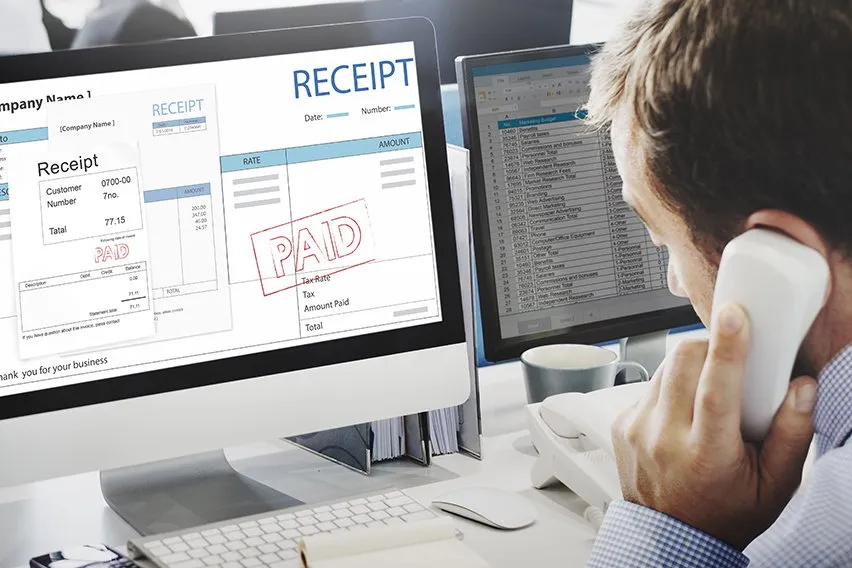
Reasons to get Accounts receivable software
Accounts receivable software is used by companies for their collections. These software programs allow companies to classify their clients and collect money from them when they owe. They also have other features that can include tracking, customer lists, e-mail marketing, and more. Most important of all is the fact that most of these software packages can be tailored specifically for a particular industry so you do not have to learn an entirely new system from scratch if you only sell to one type of company! This means more time spent on your business and less time worrying about what the collection process will look like if you switch systems again!
Top reasons to get accounts receivable software:
- Lower costs: collection management software can help lower costs in several ways. Lower labor costs will result in greater efficiency and cost savings. The biggest way accounts receivable software lowers costs is by automating the tasks of billing and collecting monies owed to the company. With accounts receivable software, you can send bills and set up automatic payments so there is no need for payment reminders or phone calls for this process.
- Time-saving:
You will have less time trying to keep track of your customers and their balances. This allows you to focus on other parts of running a business like getting new customers and growth into your market share!

- Ease of use: Accounts receivable software packages are designed to be easy to use, so there is less fiddling around in the system and more time focused on your business!
- Accessibility: Having one place to manage all aspects of your accounts receivable process makes it very convenient and allows you to focus on other areas of running your business.
- Support: With a software package like this you can access support 24/7 should the need arise. You will have all the information you need when you need it from a system that is designed specifically for accounts receivable!
- Security: Most accounts receivable software packages have security features built in and can help protect you from fraud. This means less money stolen from your business which will likely result in a boost to your bottom line.
- Ease of integration: Accounts receivable software packages are typically very easy to integrate with other systems and services, so you can be running the works of one system all the time!
- Speed: An accounts receivable software package will allow you to track client information instantly once it is entered into the system, meaning fewer mistakes and faster collections!
- Cost: It is less costly to purchase an accounts receivable package than try multiple systems that may or may not work together.
But most important of all is the fact that you have found a package that will best serve your needs.

Facial Recognition for Doors: The Future of Access Control
In today’s world, security is a significant concern for individuals and organizations. Access control is a critical aspect of security, and traditional access control methods, such as keys and access cards, are becoming outdated. Facial recognition technology is rapidly gaining popularity as an innovative and efficient solution for access control. In this article, we will explore the benefits of facial recognition for doors, how it works, and what to consider when implementing it.
What is Facial Recognition for Doors?
facial recognition for door access is a technology that uses algorithms and artificial intelligence to identify individuals by analysing their facial features. This technology grants or denies access to a specific location, such as a building or room. Facial recognition for doors eliminates the need for traditional access control methods and provides a more secure and convenient solution for access control.
How Does Facial Recognition Work?
Facial recognition works by analysing an individual’s facial features using a camera. The camera captures an image of the individual’s face and analyses it using algorithms to identify unique facial features, such as the distance between the eyes, the shape of the nose, and the contours of the face. The algorithm then compares the identified features to a database of authorized individuals to determine whether to grant or deny access. The process is fast and efficient.

Benefits of Facial Recognition
- Increased Security: Facial recognition technology is accurate and eliminates the possibility of unauthorized access. This technology is nearly impossible to bypass, making it an ideal solution for high-security locations.
- Convenience: Facial recognition for doors eliminates the need for keys and access cards, making access to a location more convenient for individuals. This technology is also fast, providing quick access to authorized individuals.
- Cost-Effective: It is a cost-effective solution for access control as it eliminates the need for physical keys and access cards. This technology also reduces the need for security personnel, saving costs.
- Improved Analytics: Facial recognition technology provides valuable data for analytics purposes. This data includes information such as the number of people entering a location and the time spent there, which can help improve business operations.
Considerations for Implementing Facial Recognition
- Privacy: Facial recognition technology raises privacy concerns, and it is essential to ensure that the technology is implemented in a manner that respects individuals’ privacy.
- Accuracy: The accuracy of facial recognition technology can be affected by various factors like lighting conditions and the camera’s angle. The technology needs to be calibrated and tested for accuracy.
- Integration: It should be integrated with existing security systems to ensure a seamless transition and to maximize the benefits of the technology.
- Maintenance: Facial recognition technology requires regular maintenance to ensure optimal performance.
Facial recognition is the future of access control, providing a more secure and convenient solution for access control. Facial recognition can improve security and streamline access control, increasing safety and efficiency.












